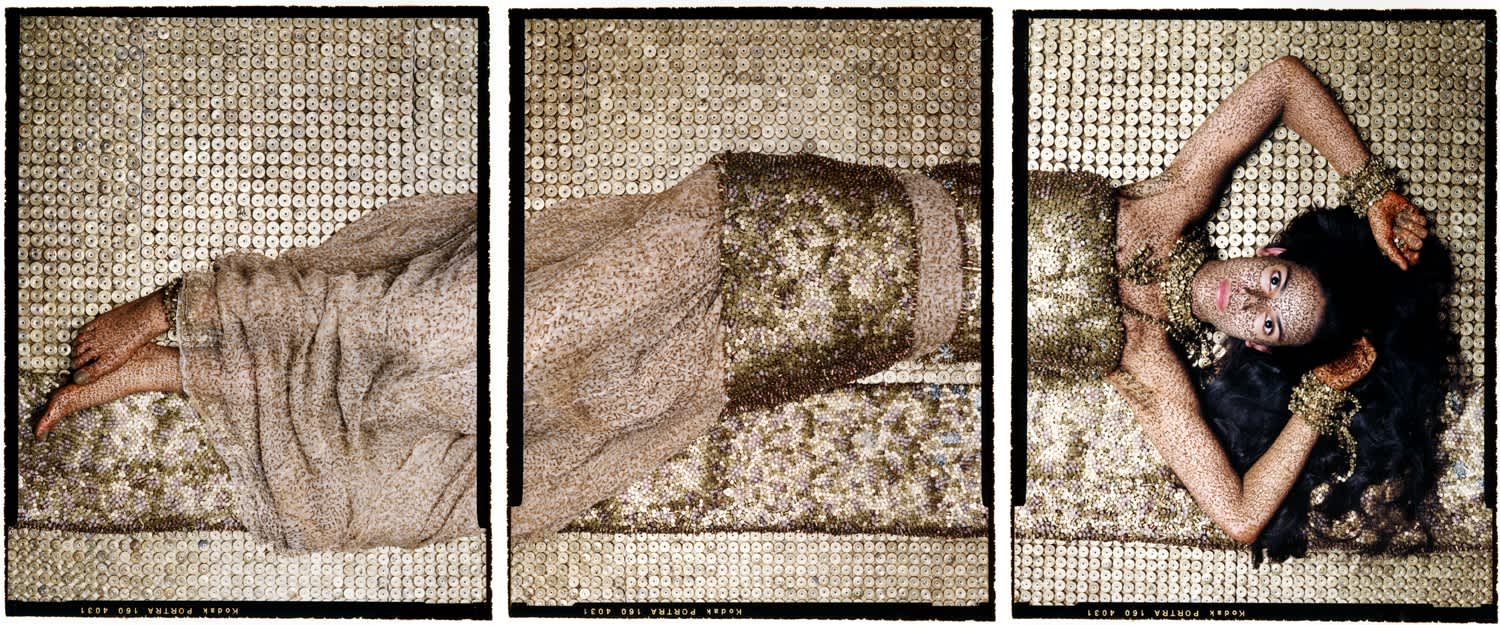Few artists mine the intersection of Eastern and Western cultural exchange quite like Lalla Essaydi. For one thing, she personally straddles geographical divides, having been born in Morocco and today living between there and New York. Much of her work also explores the capacity that images have to reduce society’s tendency to stereotype.
An exhibition of her photographs, “Lalla Essaydi: Truth and Beauty,” at Sundaram Tagore Gallery’s Singapore outpost—brings together photos from some of the artist’s best-known bodies of work: “Les Femmes du Maroc,” “Harem,” and “Harem Revisited.” Each series features depictions of Arab women in settings that reference art historical tropes and Orientalist symbols. Arabic calligraphy is written atop the images.
“My photographs of women restage and recast the nineteenth-century Orientalist imagery that continues to shape Western-world perceptions of the Arab world,” Essaydi tells artnet News. “My work depicts women who strike poses of odalisques and the figures in the harem scenes, then literally overwrite their bodies by applying hand-painted text to simultaneously divert the voyeuristic gaze and confront the confining cultural attitudes I experienced growing up.”
In the artist’s Les Femmes du Maroc series, for instance, women are photographed in odalisque poses and skin-colored clothing, referring to the fetishistic way Arab women have often been depicted throughout art history. In the sister series Harem and Harem Revisited, Essaydi’s models are set among ornate architecture and furniture decorated with the same pattern as their clothes, causing the women to literally blend into the background.



